In the void between the ground-floor ceiling and the first-floor floorboards many problems exist.
Air or wind from outside can blow through small gaps and cracks to the sides and above floor joists. These result from the fact that the joists shrink by up to 10mm in height and 4mm in width.
The blockwork is not always fully filled with mortar. There is often no mortar between the good end of a block and a joist, some missing from perp-end joints and gaps around service penetrations. It is easier to see this from the following set of pictures with descriptions.

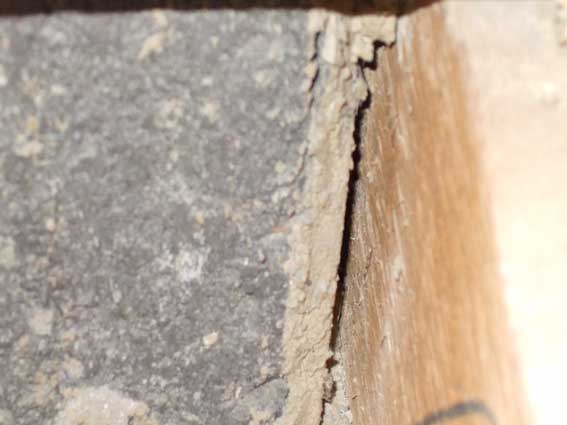

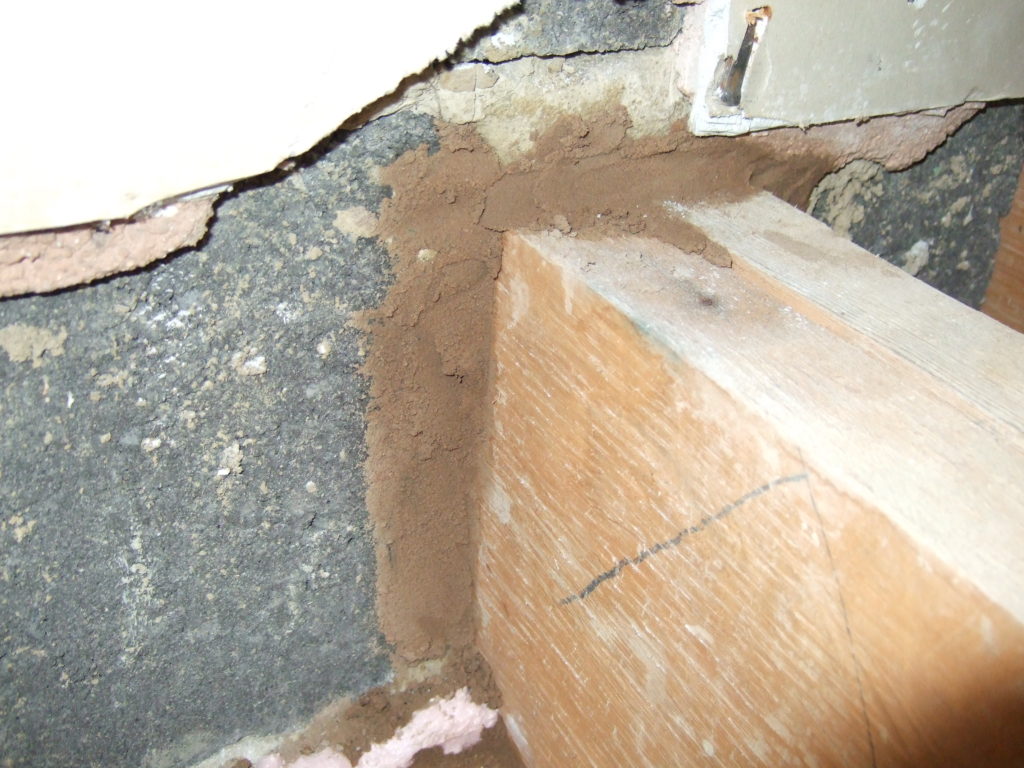
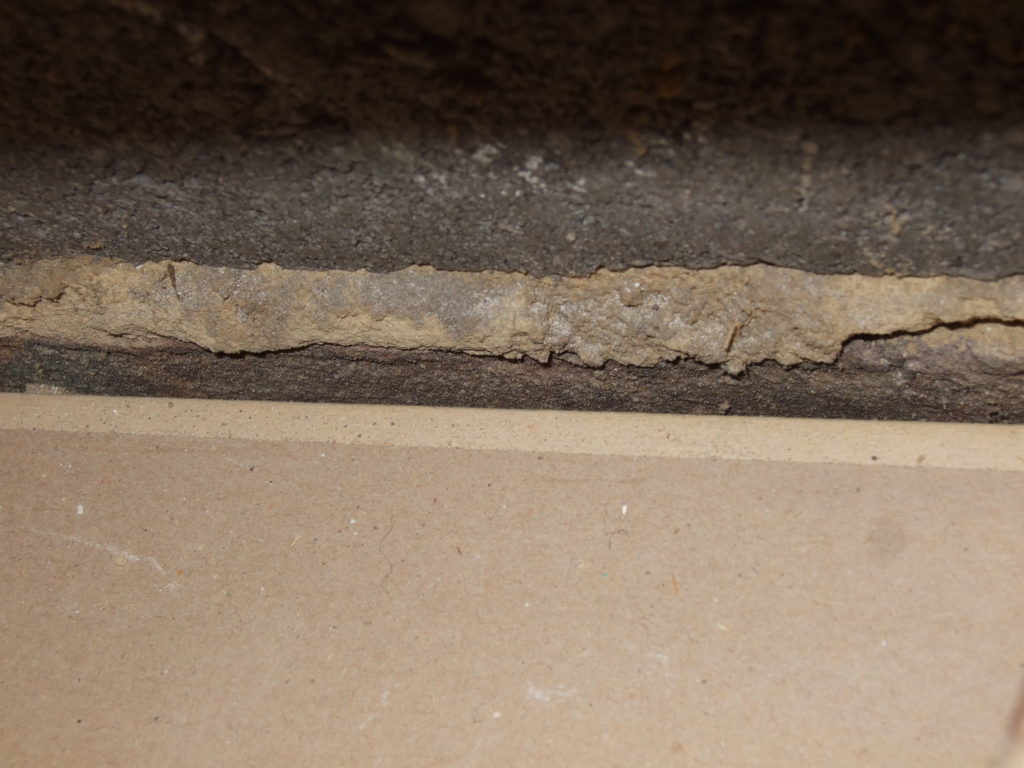
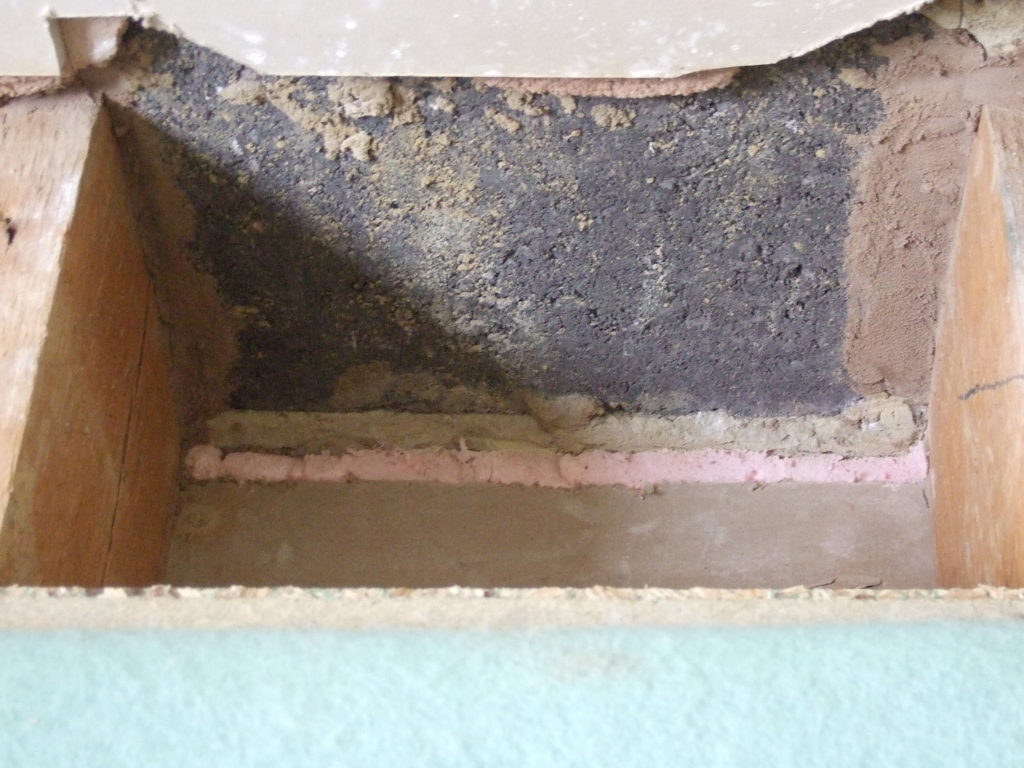


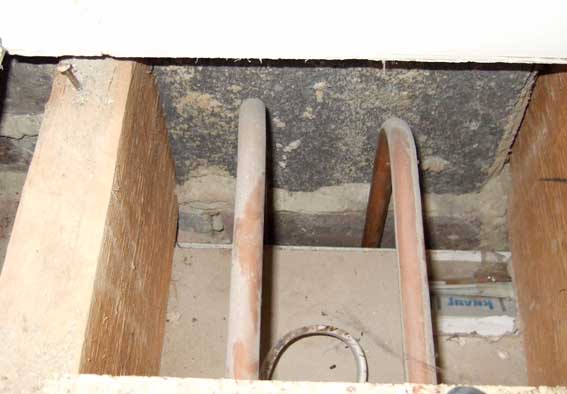
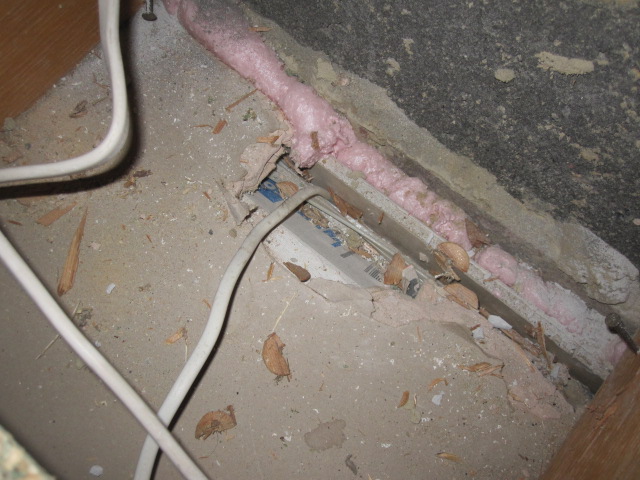
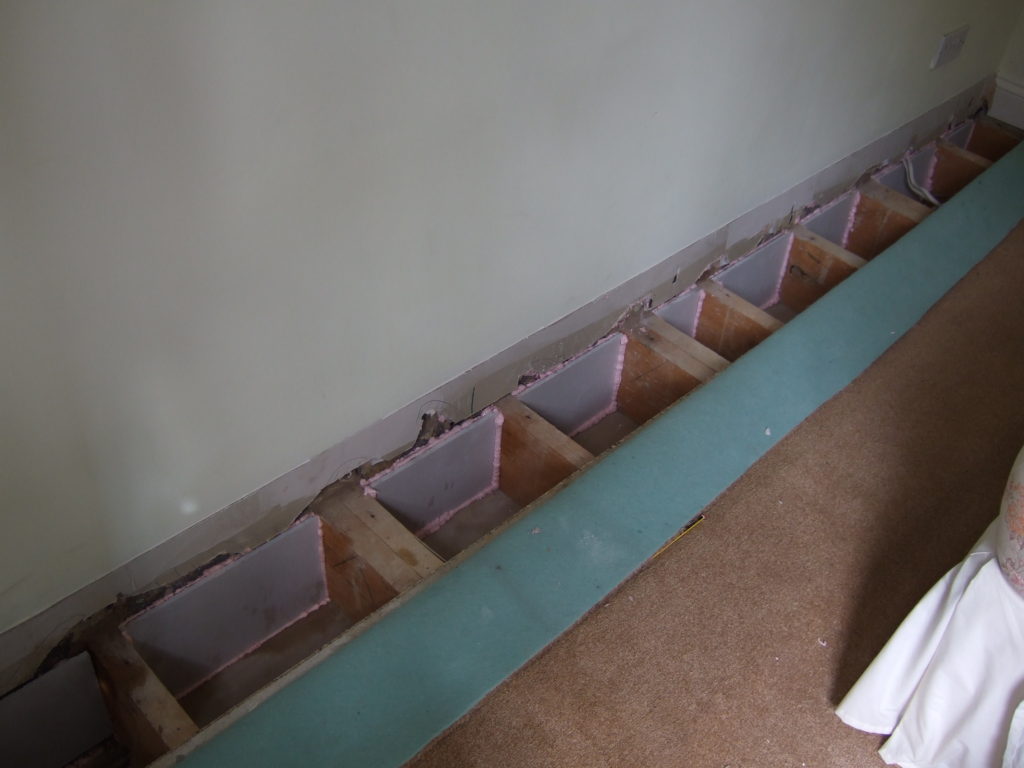
1980’s house near Eastbourne, how much energy has this wedge cost? How many saw it and ignored it during construction?
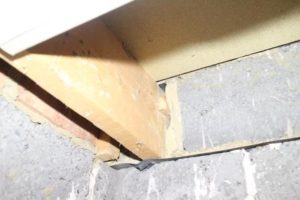
For the very technically minded among us, we will realise that air and wind can still enter the void between the plasterboard and the blockwork. Sadly it can exit through socket outlets, go around corners and get behind internal wall linings, we have even seen it come out over internal door heads 🙁
And from Jeff of GBF fame sealing his joist ends with sheet insulation and a foam gun.

